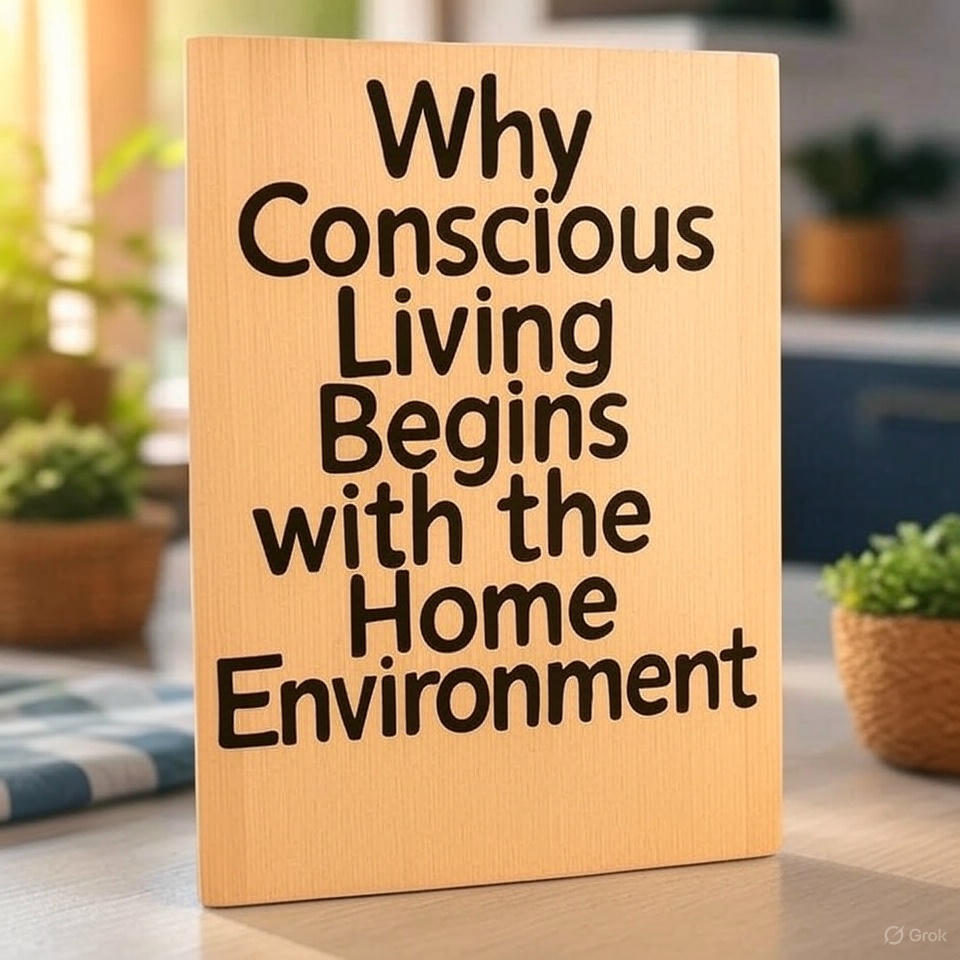Conscious living isn’t just a lifestyle trend; it’s a deliberate choice to live with intention, care, and awareness. While many people begin this journey by changing how they eat, travel, or shop, the most impactful starting point is often overlooked: the home. Our living environment shapes how we think, feel, and act every single day. If we want to live more mindfully and sustainably, it makes sense to begin with the spaces where we rest, gather, and grow.
Here’s why your home is the foundation of conscious living, and how small, thoughtful choices can create a ripple effect for both your wellbeing and the planet.
- Your Home Reflects Your Values
The objects we surround ourselves with say a lot about what we value. Are we choosing items because they’re fast and cheap, or because they’re made with purpose? Whether handmade, upcycled, or designed to last, a home filled with meaningful pieces encourages us to slow down and appreciate quality over quantity.
Creating a conscious home doesn’t mean overhauling everything overnight. It means starting where you are and choosing to make intentional upgrades, like switching to eco-friendly home furnishings that are beautiful, durable, and ethically made.
- Mindful Spaces Support Mental Clarity
Clutter and chaos in your environment can easily lead to stress, distraction, and fatigue. By contrast, a tidy, calming space supports better focus, rest, and creativity. Conscious living means curating your surroundings in a way that promotes peace and mental clarity.
This might include simplifying your layout, reducing unnecessary items, or introducing soft textures and natural materials that evoke a sense of grounding. Even a small shift, like replacing synthetic textiles with organic ones, can make a noticeable difference in how a space feels.
- Healthier Homes, Healthier Lives
Living consciously also means being aware of what’s in your home from a health perspective. Many conventional home goods contain harmful chemicals, synthetic dyes, or plastics that release toxins over time. These can impact everything from air quality to skin sensitivities.
Choosing sustainable, non-toxic materials such as organic cotton, untreated wood, and plant-based dyes can help create a safer and more nurturing environment. Items like cushions, rugs, and curtains from trusted sources not only elevate your space aesthetically; they actively support your wellbeing.
- Reducing Waste Begins at Home
Conscious living is deeply connected to sustainability, and one of the biggest contributors to landfill waste is home décor and furnishings. Fast furniture, which is mass-produced and low-cost items made to wear out quickly, have a significant environmental cost.
Investing in long-lasting, ethically crafted pieces helps reduce waste and supports a circular economy. It also helps preserve traditional skills and craftsmanship that honor people as much as the planet.
When you choose furnishings that are responsibly made, you’re not just decorating your home, you’re also making a commitment to conscious consumption.
- Your Home Influences Daily Habits
The way your home is set up can either reinforce or disrupt mindful routines. For example, a meditation corner with soft lighting and comfortable seating can support regular practice, while a well-designed kitchen with natural materials might encourage more intentional cooking.
Conscious design helps reinforce the habits that align with your values, making it easier to live a lifestyle that reflects who you are and how you want to show up in the world.
Building from the Inside Out
Ultimately, conscious living begins from within, but it’s expressed through our choices. The home is a natural starting point because it’s where we spend our most personal moments. By creating a space that’s kind to the environment, gentle on the senses, and filled with thoughtful design, we’re taking an active step toward more meaningful, intentional living.






